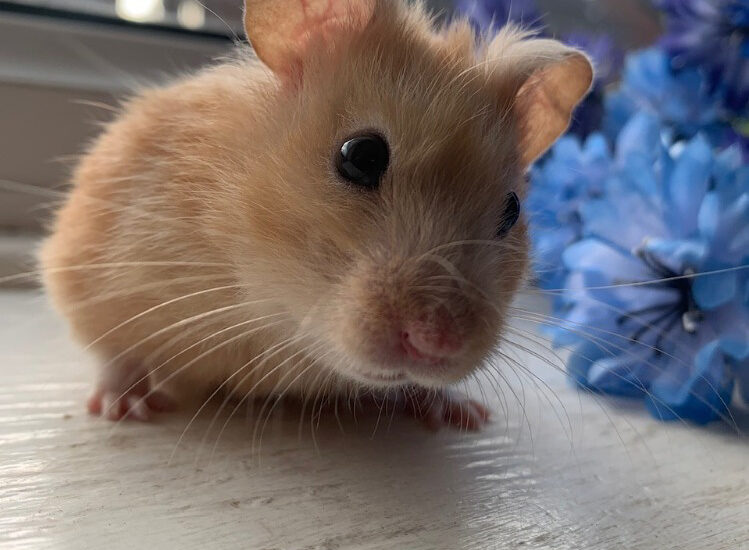Best Hamster Breeds for Educational Pets
Hamsters are not just adorable, cuddly creatures; they also serve as fantastic educational pets for both children and adults alike. With their playful antics and gentle nature, hamsters are often considered the perfect entry point into the world of pet care. Did you know that there are over 18 species of hamsters? Each breed brings its own unique characteristics and behaviors to the table. In this article, we will delve into the best hamster breeds for educational purposes, shedding light on their individual traits and care requirements.
Owning a hamster can teach individuals about responsibility, empathy, and the intricacies of animal care. If you’re looking for a pet to foster educational growth, choosing the right breed is essential. Regardless of age, understanding these little furballs can provide valuable lessons in biology, habitat, and even basic veterinary care.
This guide will cover:
- Characteristics of popular hamster breeds
- Care and habitat requirements
- Learning opportunities with hamsters
So, if you’re ready to explore the best hamster breeds for educational pets, let’s dive in!
Characteristics of Popular Hamster Breeds
Syrian Hamsters
Scientific Name: Mesocricetus auratus
The Syrian hamster, also known as the golden hamster, is one of the most popular species for beginners. They are larger than other breeds, typically growing up to 6 inches long. These hamsters are known for their friendly disposition, making them great companions.
One of the significant advantages of Syrian hamsters is that they are solitary animals; they should be housed alone to prevent fights. Their captivating behavior and personality make them excellent subjects for educational observation. For more detailed care information, you can visit this guide.
Care Requirements
- Living Space: A minimum of 24×12 inches of floor space
- Diet: Fresh fruits, vegetables, and specially formulated hamster pellets
- Habitat: An enclosed cage with proper ventilation
Dwarf Hamsters
Scientific Name: Phodopus species
Dwarf hamsters are small and come in two popular varieties: Campbell’s dwarf hamster and Roborovski hamster. They typically measure about 3-4 inches in length. These hamsters are very social and can thrive when kept in pairs or small groups.
Choosing a dwarf hamster can provide opportunities to discuss social behaviors in animals, as well as the importance of companionship. They’re generally more active and curious than their Syrian counterparts, displaying playful interactions that can be educational.
Care Requirements
- Living Space: At least 12×24 inches of floor space
- Diet: Similar to Syrian hamsters, with seeds and vegetables
- Habitat: A multi-level cage can enhance their playtime!
Chinese Hamsters
Scientific Name: Cricetus griseus
The Chinese hamster is unique due to its long tail. They have a friendly nature but can be slightly more skittish than the other breeds. Their small size and playful disposition make them ideal for educational environments, especially if patience is exercised during handling.
These hamsters can also teach kids about different species and their behaviors. Interestingly, Chinese hamsters are known to be great escape artists, providing a fun lesson in safety and habitat security.
Care Requirements
- Living Space: 12×24 inches minimum, with secure locks
- Diet: Hamster pellets along with occasional insects for protein
- Habitat: Ensure the cage is escape-proof
Learning Opportunities with Hamsters
Understanding Responsibility
Caring for a hamster provides practical insights into responsibility. Children can learn daily routines, such as feeding, cleaning, and providing companionship. This routine can help instill a sense of accountability while also teaching them about the needs of living creatures.
Biology and Life Cycles
Having a hamster can lead to discussions about biology, particularly regarding life cycles, habitat, and environment. Educators can incorporate lessons on anatomy and the differences between species, providing a holistic educational approach that goes beyond basic pet care.
Behavioral Observations
Observing hamster behavior is inherently educational. From their nocturnal habits to their unique ways of communicating, hamsters can teach individuals about animal behavior and instincts. For example, observing how hamsters store food in their cheek pouches can highlight important survival methods seen across various species.
Conclusion
In summary, hamsters make excellent educational pets, providing endless opportunities for learning and interaction. By understanding and caring for their chosen hamster breed, individuals can develop valuable life skills while enjoying the companionship of these fascinating creatures.
In choosing the best breed, consider the educational aspects of their care and behavior. Syrian, dwarf, and Chinese hamsters all offer unique experiences that can foster curiosity and responsibility in both children and adults.
As a final note, make sure to create a safe environment for your hamster. Regular interactions and care routines will not only enhance learning but also cultivate a loving bond with your pet.
For further reading and comprehensive care guides, check out this article.

